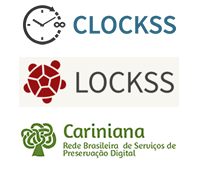Exploring Teaching Methodologies in Science: An Analysis from the Supervised Internship at Colégio Estadual Osvaldo Franco in Araguatins-TO
DOI:
https://doi.org/10.70860/ufnt.rbec.e19471Keywords:
Rural education; teacher training, supervised internship., Teaching, science teaching, science, Methodologies, Rural Education, Pedagogical practices, Education, Agroecology, Rural Education.Abstract
ABSTRACT. This article describes the reflections and experiences of two undergraduate students in biological sciences during their internship at Colégio Estadual Osvaldo Franco, located in Araguatins, Tocantins. In addition to observing classes, the interns conducted a research project whose main objective was to investigate the teaching methodologies applied in the teaching of science in elementary school II at the aforementioned school, analyzing their effectiveness. The questionnaires were distributed and collected in the 6th and 7th grade classes, resulting in a total of 43 responses. The results revealed that the methodologies best evaluated by the students were the construction of models, the viewing of videos related to the content and the completion of activities to be answered in the classroom. Overall, all methodologies received more positive than negative responses, indicating a general acceptance of the strategies used, despite individual preferences and variations in student receptivity.
Downloads
References
Lei nº 11.788, de 25 de setembro de 2008. (2008, 25 de setembro). Dispõe sobre o estágio de estudantes; altera a redação do art. 428 da Consolidação das Leis do Trabalho (CLT). Recuperado de: https://www.planalto.gov.br/ccivil_03/_ato2007-2010/2008/lei/l11788.htm.
Carabetta Júnior, V. (2013). A utilização de mapas conceituais como recurso didático para a construção e inter-relação de conceitos. Revista Brasileira de Educação Médica, 37, 441–447. https://doi.org/10.1590/S0100-55022013000300017.
Consenza, R. M. (2011). Neurociência e educação: Como o cérebro aprende. Artmed.
Costa, S. A. da, Pfeuti, M. de L. M., & Casa Nova, S. P. de C. (2014). As estratégias de ensino-aprendizagem utilizadas pelos docentes e sua relação com o envolvimento dos alunos. Revista Evidenciação Contábil & Finanças, 2(1), 59–74. Recuperado de: https://periodicos.ufpb.br/ojs2/index.php/recfin/article/view/18173.
Fonseca, J. J. S., & Fonseca, S. (2016). Didática geral (1ª ed.). INTA - Instituto Superior de Teologia Aplicada.
Lessa, E. A. V. (2019). A importância do estágio curricular na formação acadêmica do licenciando em computação [Trabalho de conclusão de curso]. Instituto Federal de Educação, Ciência e Tecnologia do Tocantins, Araguatins. Recuperado de: https://portal.ifto.edu.br/araguatins/campus-araguatins/ensino/biblioteca/trabalhos-academicos-tcc/licenciatura-em-computacao/2019/tcc-lessa.pdf/view.
Moran, J. M. (1994). Interferências dos meios de comunicação no nosso conhecimento. Intercom: Revista Brasileira de Ciências da Comunicação, 17(2). https://doi.org/10.1590/rbcc.v17i2.844.
Moreira, M. A. (2010). O que é afinal aprendizagem significativa?. Instituto de Física–UFRGS. Porto Alegre. Recuperado de: http://moreira.if.ufrgs.br/oqueeafinal.pdf.
Nicola, J. A., & Paniz, C. M. (2016). A importância da utilização de diferentes recursos didáticos no ensino de biologia. Infor, Inovação e Formação, Revista NEaD-Unesp, 2(1), 355–381.
Downloads
Published
How to Cite
Issue
Section
License
Copyright (c) 2024 Drielly Duarte Teixeira, Suzilene Chagas Leite Rangel, Kenya Maria Vieira Lopes

This work is licensed under a Creative Commons Attribution 4.0 International License.
Proposal for Copyright Notice Creative Commons
1. Policy Proposal to Open Access Journals
Authors who publish with this journal agree to the following terms:
A. Authors retain copyright and grant the journal right of first publication with the work simultaneously licensed under the Creative Commons Attribution License that allows sharing the work with recognition of its initial publication in this journal.
B. Authors are able to take on additional contracts separately, non-exclusive distribution of the version of the paper published in this journal (ex .: publish in institutional repository or as a book), with an acknowledgment of its initial publication in this journal.
C. Authors are permitted and encouraged to post their work online (eg .: in institutional repositories or on their website) at any point before or during the editorial process, as it can lead to productive exchanges, as well as increase the impact and the citation of published work (See the Effect of Open Access).














